Richard III and the Universities of Oxford and Cambridge
For someone supporting learning and ambitious to provide a more learned clergy in parishes, it would only be natural to have close relations to the two universities at Oxford and Cambridge.
1. Oxford
After his coronation Richard left on a Royal Progress on 21 July 1483. One of his first stops was Oxford, where he arrived on 24 July and stayed at Magdalen College [Hairsine, p.308] on the invitation of its founder, Bishop Willaim Waynflete. Though geography certainly played a role, the fact that he visited Oxford so early in his reign, must mean that there was a keen interest as well.
He was not the first royal visitor to Magdalen though. In September 1481 Edward IV had been staying at Woodstock, where Waynflete visited him and talked him into having a look at his College, which Edward did on 22 September. He and his entourage arrived after sunset and were welcomed in style. They spent the night and much of the next day at the College, where Edward listened to a brief speech congratulating him on his arrival and petitioning his support [Magdalen College Register ‘A’, ff.7b, 8, quoted in Hairsine, pp. 325-326]. A statue of Edward on the gate commemorates his visit.
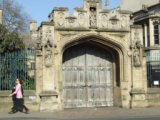
Gate of Magdalen College, Oxford – Mary Magdalen in the middle, William Waynflete on the left and Edward IV on the right. (© D Preis)
Richard’s reception was a grander affair. He was “honourably received, firstly outside the University by the Chancellor of the University and by the Regents and non-Regents; then he was received honourably and in procession at the College of the Blessed Mary Magdalene by a speech by the lord Founder” (i.e. Waynflete). [Magdalen College Register ‘A’ f.27b, quoted in Hairsine, p.309]
The day after his reception, we see Richard following his own cultural taste. Unlike the short speech, which was given to Edward, he listened to two debates, one on moral philosophy and one on theology. I think Hairsine is right when he remarks:
There was certainly no need for a medieval autocrat to sit through not one but two learned debates if he did not find a genuine interest there. One is lead to believe that Richard’s visits to Oxford and Cambridge were welcome interludes from the cares of government [Hairsine, p.309].
Richard seems to have been impressed with the debates as well as his welcome and rewarded the participants and Magdalen College handsomely with venison and cash. The whole event was in detail recorded in the Register of Magdalen College, which the anonymous Chronicler ended with the words Vivat rex in eternum, which can be translated as a “may the King live forever!” [Hairsine, p.309].
In the end of October 1483, Richard came for a second visit to Oxford, again staying at Magdalen College, though not much is known about this visit [Hairsine, p.311]. The last documented connection between Oxford University and Richard is in March 1485, when Richard recruited an Oxford graduate into his service [Hairsine, p.317].
2. Cambridge
Richard’s connection to Cambridge lasted over a much longer period compared to the one to Oxford, starting in the mid 1470, when he gave 20 marks to the university in 1475-76. It seems to have been a very close and cordial relationship from both sides. On 7 April 1481, the congregation of the university wrote a remarkable letter to the then Duke of Gloucester. In it they announce that in gratitude for the many favours he had shown them, they would “ask every Cambridge doctor or bachelor of theology who preached at [two places in London famous for their Easter celebrations] to mention Richard by name, to commend him to their listeners, and ask for prayers for his well being,” an honour which had never been granted to anyone before. In early 1480 or 1481 two representatives of the University travelled to London to see Richard – a six day journey in bad weather. In 1482 the University staged a procession to celebrate his victory against the Scots. [Sutton & Visser Fuchs, ‘Cambridge’, pp.112-114]
The good relationship continued when Richard became king. Probably in late June 1483, the University wrote to Richard to ask for his mercy towards one of their graduates, Thomas Rotherham, the Archbishop of York, who was Chancellor at that time. He had been arrested on 13 June 1483 in connection with the Hastings affair. Rotherham was released in due course. [Sutton, Visser-Fuchs, ‘Universities’, pp.95-99] Richard visited the University in early March 1484 and was welcomed with a procession and masses. They also decided to say a special mass every year on 2 May for Richard and Anne. They promised that as soon as they would hear of his death they would perform a special funeral mass, a promise they kept, as the accounts for 1485 show the expense for candles used at the ‘exequies of King Richard”. [Sutton & Visser Fuchs, ‘Cambridge’, pp.114-115]
There are especially three institutions in Cambridge, which benefitted from Richard’s generosity and which we can admire today.
2.1 King’s College
On a visit to the King’s College Chapel in Cambridge more than 20 years ago, I bought a postcard showing “The Kings who built the Chapel”. Though Henry VIII is depicted as the crowning glory, it was the inclusion of Richard which made me buy the card and eventually investigate this subject.
King’s College was founded by Henry VI in 1441, building work started in July 1446. When Edward came to power in 1461, the workmen packed up their tools and very little was done to continue during his reign. This changed dramatically, when Richard became King. He gave instructions that “the building should go on with all possible despatch” and to “press workmen and all possible hands, provide materials and imprison anyone who opposed or delayed”. He also sent his own master plumber and glazier to help with the building. This result was that by the end of his reign the first six bays had reached full height, of this the first five were roofed with oak and lead and were in use. The University thanked him for funding and “erecting the buildings of King’s College, the unparalleled ornament of England.” Drawings of a planned tower still exist, which can be dated to 1484. [‘History of the Chapel’; Sutton & Visser-Fuchs, ‘Cambridge’, pp.116-117]
Henry Tudor was in no rush to continue the project, even though the college complained that the building “begun by royal munificence now stands shamefully abandoned”. Only later Henry realised that the association with the “royal saint” Henry VI might help with legitimising his reign and decided to finish the chapel with work starting in earnest in 1508. [‘History of the Chapel’]
2.2 Queens’ College
While Richard left his mark on the King’s College Chapel during his reign, his relationship with Queens’ College predates his reign.
Queens’ was originally founded by Andrew Doket as the college of St Bernard in 1446, one year later Henry VI confirmed this, but as his foundation. In 1448 a further charter declared it to be the foundation of Margaret of Anjou. From 1465 onwards, Elizabeth Woodville came to be regarded as a co-founder, which explains the name (Queens’), though there is no evidence that either Margaret or Elizabeth ever gave the college any endowments. During Richard’s reign, when he made further grants to the College, Queen Anne was also considered a founder, but that was “conveniently forgotten when political circumstances changed in 1485”. Andrew Doket remained as president until his death in 1484 and worked tirelessly for the benefit of the college. [Sutton & Visser-Fuchs, ‘Cambridge’, pp.121-129; Ross, p. 135]
Richard relationship with Queens’ began on 1 April 1477 when he gave the property of Fowlmere, Cambridgeshire, to the college, with the aim to fund 4 priests, fellows of the college, to say prayers for a number of Richard’s living relatives and for the souls of departed. Among the people to be commemorated in the prayers were – apart from his family – also friends, who had fallen in the battles of Barnet and Tewkesbury. There were also to be prayers for John de Vere, the 12th Earl of Oxford, executed in 1462 by Edward IV, and his widow, to whom the manor of Fowlmere had belonged. [Sutton & Visser-Fuchs, ‘Cambridge’, pp.120-124; Ross, p.135]
Richard’s endowment to Queens’ has to be seen in connection with the foundation of his colleges at Middleham and Barnard Castle. The statutes of his college at Middleham require that, should it not be possible to find a dean from among the 6 chaplains there, this position should be filled by one of the 4 men at Queens’. This would ensure that Middleham and Barnard Castle had the best religious instruction, liturgy and music available. [Sutton & Visser-Fuchs, ‘Cambridge’, p.120]
Queens’ benefitted greatly from Richard and Anne during his reign. Anne intended to give estates from her Neville and Beauchamp inheritance to the college, but it had to give all this up when Henry Tudor came to the throne. Richard also gave the college a silver seal including a boar device, which might have been part of new arms, which survives to today as one of several arms. [Sutton & Visser-Fuchs, ‘Cambridge’, pp. 126-129]
Queens’ is almost completely constructed of red brick, probably imported from Holland. The oldest part, which Richard would have known is the Old Court. Because of the durability of the bricks this court still is almost as it was built [BHO, ‘Queens’].
2.3 Great St Mary’s
In 1478-79, Richard gave £20 for the rebuilding of the university church, Great St Mary. Even after his death his support for the church continued to have an effect. On 21 January 1495, Thomas Barowe, a close associate of Richard and master of the rolls and keeper of the great seal, gave the extravagant amount of £240 to the rebuilding of the church and for “masses, prayers and ceremonies in honour of King Richard III and Dr Thomas Barowe – who were to be enrolled in the list of the university’s benefactors”. Richard was for a while politely forgotten, but has more recently been restored.
The rebuilding of the nave was begun in the late 1470s, at the time of Richard’s gift. Barowe, who had intended the church as a monument to Richard, would with his gift have secured its completion. Possibly he was continuing a process initiated by Richard’s gift of £20, as there are records stating that he acted as a messenger to bring gifts from Richard to Cambridge. [Brooke, pp.18-21; Sutton & Visser Fuchs, ‘Cambridge’, p.113]
Part 1 – Richard III and Learned Men
Part 2 – Richard III as the Founder of Collegiate Churches
Part 4 – Richard III as Law Maker (incl. bibliography)
Tags: Books, Cambridge, Church, Learning, Oxford, Richard III
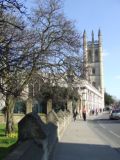
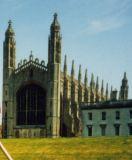
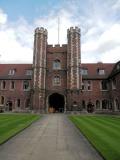
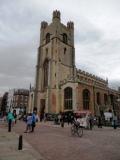

Leave a reply